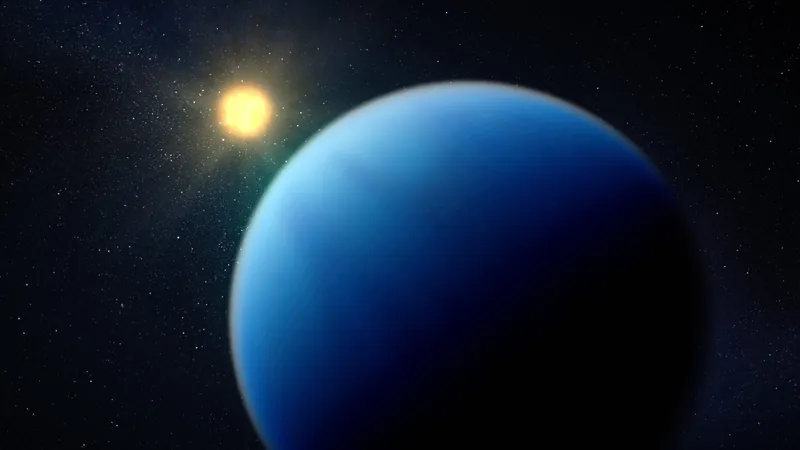
JWST Uncovers Breathtaking Secrets of a Mysterious Sub-Neptune Exoplanet
2025-05-07
Author: Nur
Unlocking Mysteries Beyond Our Solar System
In the vast expanse of our galaxy, the most common inhabitants are sub-Neptunes—gassy worlds larger than Earth yet smaller than Neptune. Surprisingly, none of these intriguing planets orbit our Sun, leaving their formation and characteristics cloaked in mystery. However, NASA's James Webb Space Telescope (JWST) has recently turned its powerful gaze towards TOI-421 b, revealing unparalleled insights into these enigmatic exoplanets.
A Game-Changer in Planetary Science
The JWST, with its advanced infrared capabilities, is revolutionizing how scientists study exoplanet atmospheres. Eliza Kempton from the University of Maryland expressed her excitement, stating, "I've been waiting my entire career for Webb to help us meaningfully characterize the atmospheres of these smaller planets. By studying their atmospheres, we're enhancing our understanding of their formation and evolution, and exploring the curious absence of such planets in our solar system."
The Rise of Sub-Neptunes
Just a decade ago, sub-Neptunes were virtually unknown until the Kepler space telescope began uncovering them. These planets, several times the size of Earth yet not quite giants like Jupiter or Saturn, are notoriously tricky to observe due to their relatively cool atmospheres, often obscured by methane-induced clouds and hazes. Observations typically yield flat, indistinct spectra, leaving scientists yearning for clarity. But new theories suggested that hotter planets, exceeding 1,070 degrees Fahrenheit (580 degrees Celsius), might boast clearer atmospheres without methane clouds.
TOI-421 b: The Game-Changer
Enter TOI-421 b, a hot sub-Neptune basking at around 1,340°F (730°C). This planet became the perfect candidate to validate the ambitious theory. And the results were nothing short of groundbreaking; JWST successfully captured spectral features indicating TOI-421 b's atmospheric makeup as it transited its star.
A Surprising Atmospheric Composition
The research team from the University of Maryland made several intriguing discoveries. They identified water vapor, alongside possible traces of carbon monoxide and sulfur dioxide, while methane and carbon dioxide were notably missing. Most astonishingly, TOI-421 b's atmosphere is largely composed of hydrogen, a stark contrast to previously studied sub-Neptunes. This hydrogen-rich environment aligns more closely with that of giant planets in our solar system, hinting that TOI-421 b may have formed in a manner similar to our own gas giants, rather than the cooler planets that orbit red dwarf stars.
The Future of Exoplanet Exploration
Looking ahead, researchers are eager to study more hot sub-Neptunes around Sun-like stars to determine if TOI-421 b's composition is an anomaly or part of a broader trend. Brian Davenport, the study's first author and a Ph.D. student at the University of Maryland, remarked, "We've unlocked a new approach to understanding these sub-Neptunes. By focusing on these high-temperature planets, we could expedite our understanding of their fascinating worlds."




 Brasil (PT)
Brasil (PT)
 Canada (EN)
Canada (EN)
 Chile (ES)
Chile (ES)
 Česko (CS)
Česko (CS)
 대한민국 (KO)
대한민국 (KO)
 España (ES)
España (ES)
 France (FR)
France (FR)
 Hong Kong (EN)
Hong Kong (EN)
 Italia (IT)
Italia (IT)
 日本 (JA)
日本 (JA)
 Magyarország (HU)
Magyarország (HU)
 Norge (NO)
Norge (NO)
 Polska (PL)
Polska (PL)
 Schweiz (DE)
Schweiz (DE)
 Singapore (EN)
Singapore (EN)
 Sverige (SV)
Sverige (SV)
 Suomi (FI)
Suomi (FI)
 Türkiye (TR)
Türkiye (TR)
 الإمارات العربية المتحدة (AR)
الإمارات العربية المتحدة (AR)